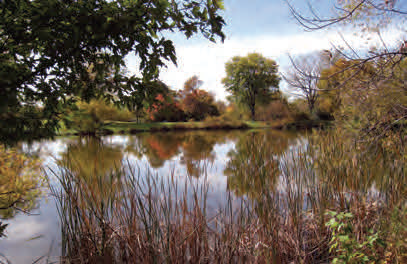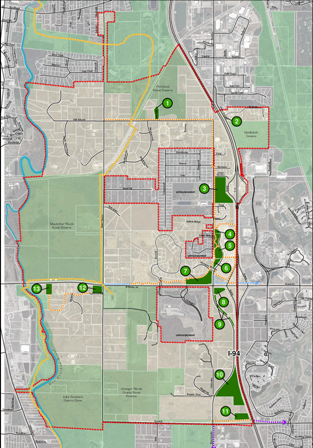Sustainability
Mettawa is a community that holds the land very dear.
- The Village has installed trails that connect to five forest preserves in and around Mettawa -many of these forest preserves have been donated by our own residents.
- Adlai Stevenson lived in Mettawa where he served as a founder of the Village, and later was a presidential candidate. Eventually, he became a leading Ambassador to the United Nations. His former home is now owned by the Forest Preserve and is open to the public. The home showcases artifacts/gifts from various dignitaries who visited and who would ride through the open lands of Mettawa as many needed a break from the rigors of public service.
Sustainability is a concept broadly defined. It can apply to plans, programs, and designs and should be a goal at all scales of planning. It is a concept that relates to the social, economic, natural and man-made environments.
The United Nations Bruntland Commission defined sustainability as “meeting the needs of the present without compromising the ability of future generations to meet their own needs.” Another term, sometimes used interchangeably with sustainability is “green.” However, green programs and plans focus not on the three-pronged approach.
Green infrastructure looks to influence and support communities like Mettawa. Elements of this concept focus on integrating and preserving wetlands, surface and ground water, woods and native landscapes, streetscapes, parks and open space. Two examples where the Village is using this model include:
- Managing soil that becomes compacted during construction to avoid long-term expenses caused by damaged vegetation and increased runoff which can lead to flooding problems and water pollution.
- Using green pesticides to avoid contaminating ground, surface water, and shallow wells…and encouraging residents to apply such to their lawns and gardens to keep their land as healthy as possible.
Incorporating an element of green infrastructure into our comprehensive planning process for land use, and land preservation, can produce benefits related to: stormwater management and flood reduction. Put another way, green planning is good planning with a greater consideration of natural environmental elements during every phase of plan development. Green planning sees the big picture and should strive for each planning decision to contribute to more environmentally sensitive and sustainable projects.
Put another way, green planning is good planning with a greater consideration of natural environmental elements during every phase of plan development. Green planning sees the big picture and should strive for each planning decision to contribute to more environmentally sensitive and sustainable projects.






